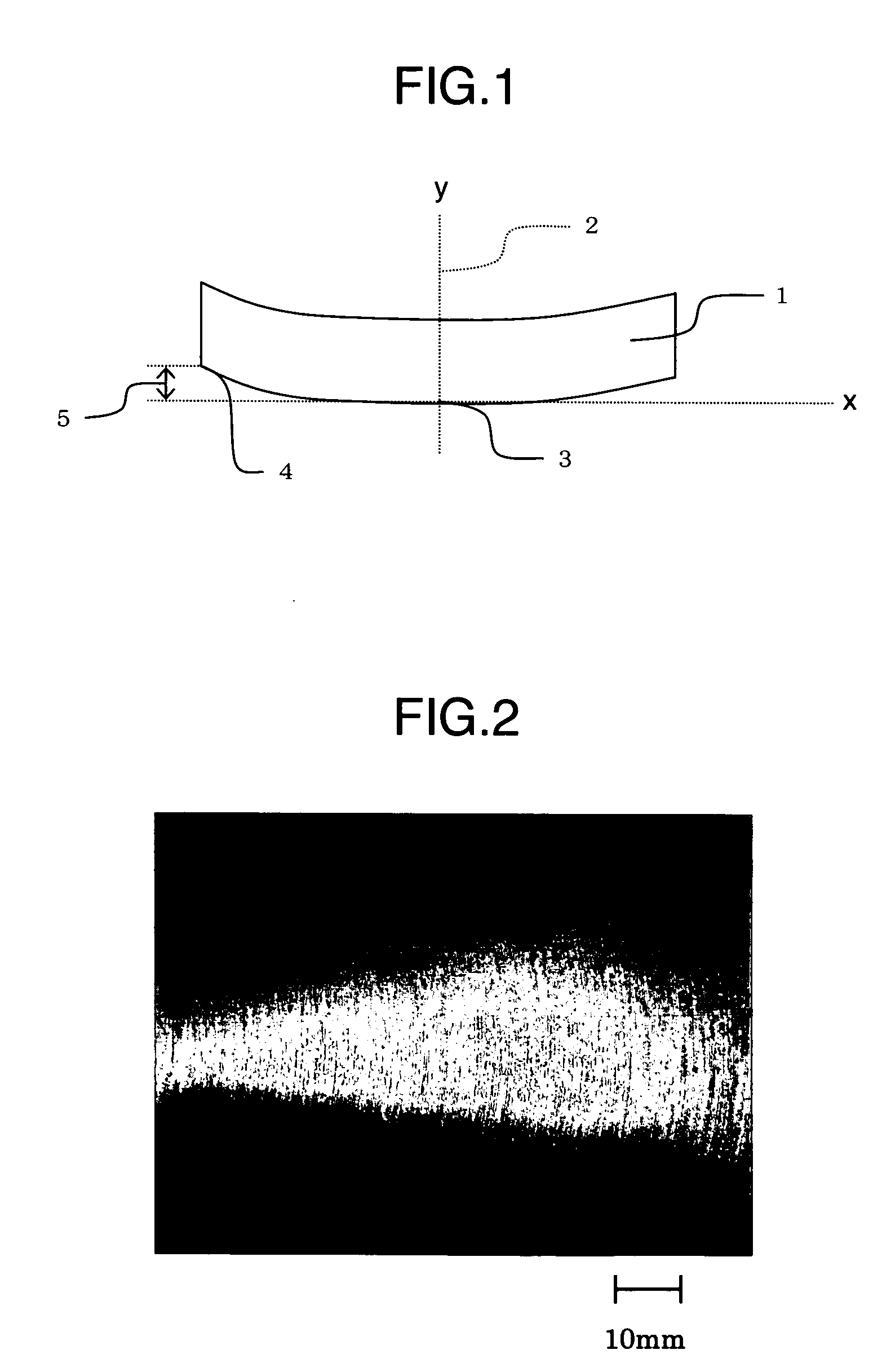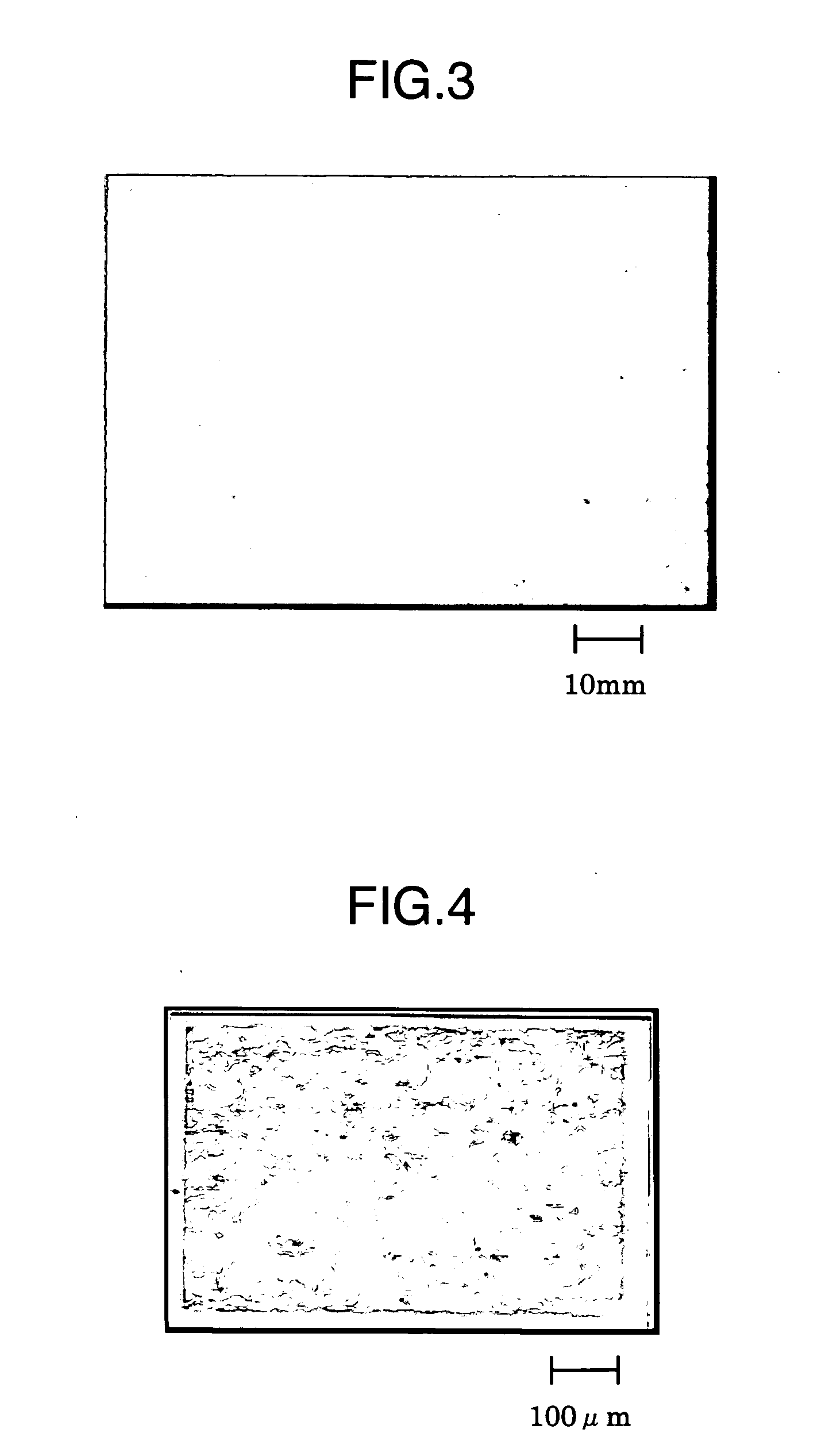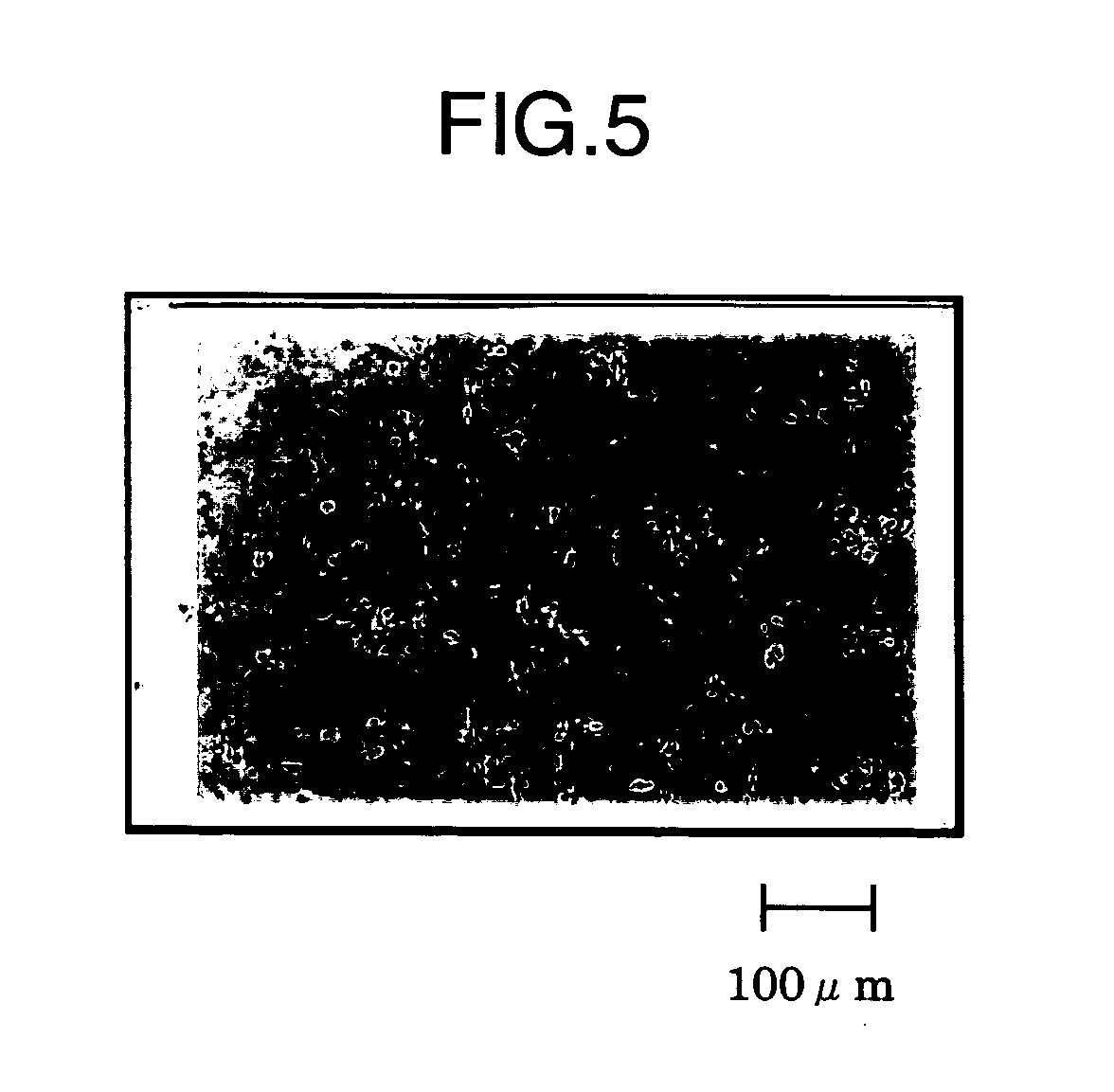Method of producing target material of Mo alloy
a target material and mo alloy technology, applied in the direction of vacuum evaporation coating, coating, transportation and packaging, etc., can solve the problems of particle content in deposited films, and a high risk of additive element segregation, so as to reduce the unfavorable shape-change of pressurized and sintered bodies, reduce the segregation of material components, and improve the packaging density of raw material powder blends
- Summary
- Abstract
- Description
- Claims
- Application Information
AI Technical Summary
Benefits of technology
Problems solved by technology
Method used
Image
Examples
example 1
[0051] There were prepared a Mo powder having an average particle size of 12 μm, a W (tungsten) powder having an average particle size of 12 μm, a Nb powder having an average particle size of 100 μm, a Ti powder having an average particle size of 100 μm, and a Zr powder having an average particle size of 100 μm.
[0052] Specimen Nos. 1 to 6 target materials shown in Table 1 were produced by the following process, which are of the present invention.
[0053] (1) In order to produce each of the specimens, given amounts in atomic % of the Mo powder and any one of the transition metal powder were checkweighed.
[0054] (2) The checkweighed powders were blended for 10 minutes with utilization of a V-type blender to obtain a raw material powder.
[0055] (3) The raw material powder was compressed under pressure of 265 MPa by a CIP machine to form a green compact.
[0056] (4) The green compact was pulverized with utilization of a jaw crusher and a disc mill to produce a secondary powder.
[0057] (5...
example 2
[0079] A sintered body, having the same chemical composition and the same size as those of Invention Specimen No. 2 shown in Example 1, was produced by the same manner as the case of Invention Specimen No. 2, and after the HIP process it is subjected to hot rolling thrice together with a container for pressurizing under conditions of a temperature of 1150° C. and a reduction ratio of not more than 50%. An expected size of a target material is of a width of 1500 mm and a length of 1800 mm. A result of rolling of the sintered body is shown in Table 2.
TABLE 2DimensionofObjectiveHeatingFirst timeSecond timeThird timeChemicalSintereddimensiontemper-Total rollingrollingrollingrollingSpecimencompositionbodyin rollingaturereductionreductionreductionreductionNo.(atomic %)(mm)(mm)(° C.)(%)(%)(%)(%)Result2-195.0Mo—81 × 812 ×25.7 × 1500 ×115068203043.5No cracking5.0Nb10531800
[0080] As will be seen from Table 2, by carrying out the rolling under conditions of a heating temperature of 500 to 15...
example 3
[0082] The target material as hot-rolled in Example 2 was subjected to a recrystallization heat treatment in vacuum at temperatures of 900° C., 1150° C. and 1300° C., respectively. After the work is heated up to a heat treatment temperature, the temperature is held for one hour, and thereafter the work is cooled. Specimen Nos. 2-1-1 , 2-1-2 and 2-1-3 were taken from the three type works, respectively. Microstructures of the specimens were compared with one another with utilization an optical microscope with magnification of 100. The observation result is shown in Table 3. With regard to the specimens subjected to a recrystallization heat treatment at temperatures of 900° C. and 1300° C., respectively, there are provided photographs showing microstructures of the specimens with utilization of an optical microscope with magnification of 100 in FIGS. 4 and 5, respectively.
TABLE 3RecrystallizationChemicalheat treatmentSpecimencompositiontemperatureNo.(atomic %)(° C.)Microstructure2-1-...
PUM
| Property | Measurement | Unit |
|---|---|---|
| Temperature | aaaaa | aaaaa |
| Temperature | aaaaa | aaaaa |
| Length | aaaaa | aaaaa |
Abstract
Description
Claims
Application Information
 Login to View More
Login to View More - R&D
- Intellectual Property
- Life Sciences
- Materials
- Tech Scout
- Unparalleled Data Quality
- Higher Quality Content
- 60% Fewer Hallucinations
Browse by: Latest US Patents, China's latest patents, Technical Efficacy Thesaurus, Application Domain, Technology Topic, Popular Technical Reports.
© 2025 PatSnap. All rights reserved.Legal|Privacy policy|Modern Slavery Act Transparency Statement|Sitemap|About US| Contact US: help@patsnap.com



